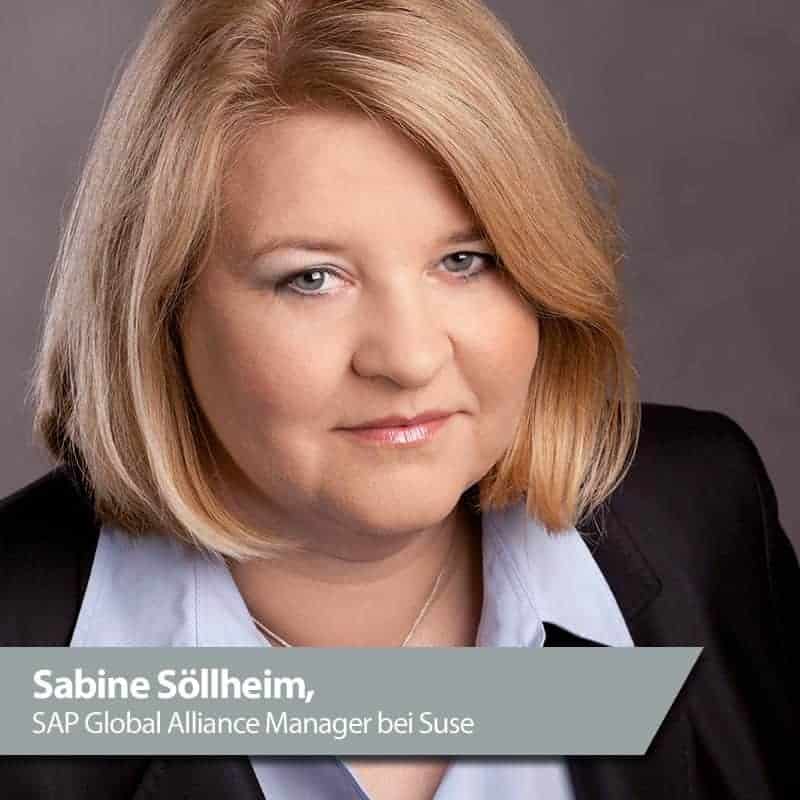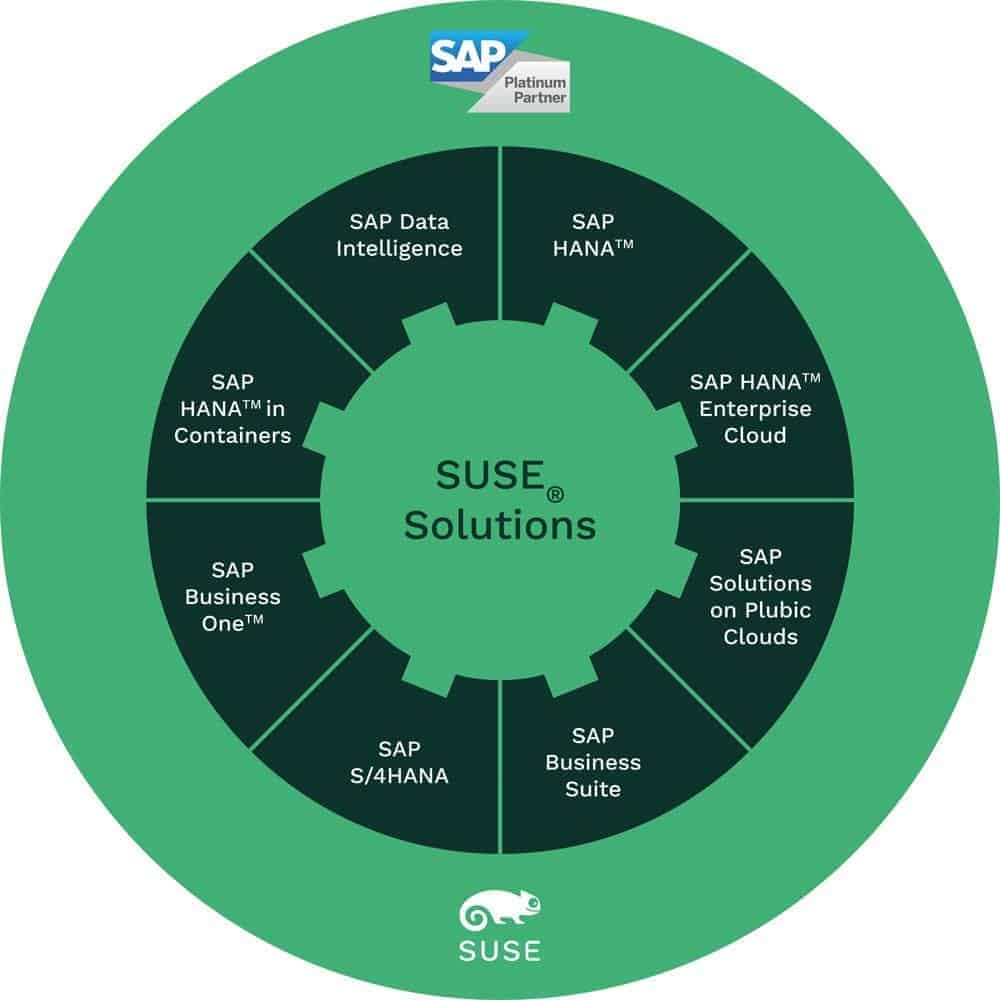SAP in the Public Cloud with Suse
![[shutterstock.com: 384283480, AFANASEV IVAN]](https://e3mag.com/wp-content/uploads/2020/08/shutterstock_384283480.jpg)

The topic of the cloud is omnipresent and has become a permanent fixture, and not just in professional IT. Based on figures from Gartner, companies are making even greater use of public cloud services this year than last year. In a publication from last fall, there is talk of a 17 percent increase to over 266 billion US dollars worldwide in 2020. Software as a Service (SaaS) and Infrastructure as a Service (IaaS) are strong growth drivers.
Of course, existing SAP customers also consider all cloud plays when evaluating their own S/4 roadmap. Based on decades of on-prem experience and the advantages and disadvantages of SaaS and IaaS cloud models, it is important to find the optimal operating model for users. Service providers and public cloud providers have a broad catalog of services from which one must choose conscientiously for one's own ERP architecture.
The dominant public cloud IaaS service providers with SAP references are Amazon AWS, Microsoft Azure, and Google with the Google Cloud Platform (GCP). And Suse provides solutions on all of these public clouds that are stringently geared to mission-critical SAP use. Incidentally, as early as 2010, Suse was the first Linux on AWS with Suse Linux Enterprise Server (SLES), which underscores the long period of time over which Suse has been involved with public cloud use.

However, there have long been several or more solutions that Suse makes available to customers on AWS, Azure and GPC via public clouds, and which SAP customers are increasingly turning to: In addition to SLES, these include SLES for SAP (with Suse HAE), which is the leading Linux platform in the SAP environment including SAP Hana and Hana-based systems such as SAP S/4 Hana, Suse Manager as a management solution, the Cloud Application Management Platform based on Kubernetes, and in some cases Suse Storage.
Suse has long-standing and close public cloud partnerships with Amazon as well as with Microsoft and Google, which naturally also extend to SAP in this environment. Likewise, there are of course partnerships of the three major public cloud providers with SAP. Finally, SAP certifies the respective clouds and the SAP partner solutions available there for SAP use.
From a historical perspective, AWS has become something of a top dog in the public cloud environment with SAP IaaS. In recent years, however, Microsoft has more than made up ground with Azure and has been very popular with SAP customers for some time. And Google with GCP has also considerably intensified its public cloud activities "for SAP". There is strong competition, both in terms of price and performance, from which customers benefit.
The mere fact that today a VM (compute services) with a size of 12 TB (scale-up) or up to 24 TB can be consumed on bare metal machines via public cloud underlines the development one is dealing with - for numerous complete SAP S/4 Hana landscapes with DEV, test, QA and PROD systems, such size categories are sufficient.
The picture is different for larger ERP installations, which normally follow a multi-level concept consisting of DEV, test, QA and of course PROD systems. All four ERP areas can naturally be set up with bare metal systems. An advantage for existing SAP customers is the option of operating the multi-level concept in a public cloud or customizing a multi-cloud scenario including bare metal.
Consistent alignment
Of course, the aforementioned public cloud providers are keen to offer SAP customers not only IaaS services or the cloud migration/transition of SAP infrastructure systems, but also other services of their own, for example from the PaaS or SaaS area - such as AWS's Aurora database, Microsoft AI or CRM 365, or Google's analytics solutions. This enables them to positively influence their important "economy of scale" or their public cloud competitive position.
For Suse, the public cloud deployment of solutions in the SAP environment has long had the same significance as for on-premise. For on-prem, Suse is known to be the preferred and recommended open source provider in the SAP environment, with a leading market share (estimated at between 80 and 90 percent) for the Hana Linux operating system Suse Linux Enterprise Server for SAP Applications (SLES for SAP) alone.
It should be noted that more and more SAP user companies are also turning to SLES for SAP as a proven, secure and reliable platform for SAP deployment when using public cloud services.
And that is to cover different SAP operation or usage use cases. For example, some of the existing on-premise customers are using IaaS services to move DEV, test and QA systems to a public cloud. Another is building a disaster/recovery system in a public cloud as part of high-availability optimizations. Yet another sees IaaS public cloud services as a proven SAP infrastructure tool for carrying out SAP projects of any kind or for quickly being able to use a training system.

A number of SAP customers are also considering transferring their entire SAP data center to a public cloud. Some companies have already taken this step. One motivation for this is the cost of providing SAP infrastructures and SAP operations.
An additional driver can also be that people are no longer willing to invest in regular hardware renewals (refresh). These are expected from the public cloud service provider. Or, another direction of thrust: The company's own "vertical integration" is to be reduced in order to be able to pay freed-up resources into innovations.
Even cloud skeptics must agree that IaaS services have never made it so easy to select, set up and use required SAP infrastructure resources on a public cloud or on the corresponding marketplace. And this is true regardless of which SAP solutions come to bear on the basis of IaaS. Be it SAP S/4 Hana, SAP BW/4 Hana or SAP C/4 Hana or other Hana-based applications.
The Suse solutions that are involved in the public cloud area are briefly listed again: SLES (as a generic operating system), the already mentioned operating system platform SLES for SAP Applications as well as SLES for High Performance Computing (HPC) and also the Suse Manager, the Suse Cloud Application Platform (CAP), which is based on Kubernetes.
Various offers
Suse's credo is to consistently support SAP customers both on-premise and in public clouds with the same solutions and the same features. Close partnerships in sales/marketing and technology exist with the three leading public cloud service providers "for SAP" Amazon, Microsoft and Google, among others. Suse also works with other top ten public cloud providers.
As explained, Suse provides the same solutions with the same functionality on the basis of technology consistency on-premise as well as on public clouds. In conjunction with the SLES for SAP Applications operating system platform, this means: SAP customers can also build and operate highly available SAP Hana HA/DR systems on public clouds using Suse HAE Cluster Software. In addition to using the many functions developed jointly with SAP for mission-critical and dedicated SAP (Hana) deployment. Such as live patching, workload memory protection, saptune, Hana hardening, Linux kernel optimization and security features.
The latest version of SLES for SAP, Release 15.2, is now also available both on-premise and on public clouds. This is accompanied by even greater automation and optimized monitoring, for example to further minimize downtimes and recovery times in the long term or to increase availability for SAP Hana and NetWeaver-based applications. This automation is divided into individual modules that can be called from a wide variety of front ends, such as Terraform, YaST or even Suse Manager.
Likewise, with SLES for SAP 15.2. specifically for public cloud use, what has been achieved has been pushed further forward. Specifically, there are new mechanisms for quickly installing, configuring and transferring (especially large) SAP landscapes into operation with consistent and always the same results. Terraform and Salt are then used here to set up complete SAP S/4 Hana software stacks including high availability in a short time.

Save through "reservations
With version 15 of SLES for SAP Applications, deployments/transitions of business-critical workloads and applications were provided by Suse in an extended form on public cloud environments. It also represents the first time a so-called multi-modal operating system platform in which traditional infrastructures, software-defined infrastructures (SDI) and application-oriented architectures can be operated or used in coexistence. And it does so on the basis of a uniform code base.
Furthermore, SLES 15 for SAP Applications connects containerized and traditional development environments, including the combination of legacy applications and microservices. The version also offers improvements in the area of minimizing downtimes. Virtually all Suse products are listed in the Marketplace of a respective public cloud service provider. By default, Suse customers can choose from two payment models.
The first variant is based on the pay-as-you-go model, with the focus on time-based billing. The other variant works according to the bring-your-own-subscription (or license) model. The key point here is that only the cloud infrastructure is charged by the cloud provider. Suse images are provided in the respective public cloud for both variants, in some cases also hardware images.
If systems are run over a longer period in the pay-as-you-go model, there is an option to keep possible escalating costs in check. For example, on the basis of "reservations" on Microsoft's Azure for one or even three years. In this way, a VM can be booked as an advance reservation in "Reserved Instance Mode". This allows discounts of up to over 70 percent for the Azure infrastructure. Similar offers or programs are offered by Amazon and Google.
Incidentally, Suse was the first partner on Azure to make this possible for the operating system as well (via Annual Reservations/Software Plans). Here, too, discounts of up to over 60 percent are possible for the Suse operating system. Azure also offers IaaS services called "Hana Large Instances" for very large Hana systems.
Purpose-built hardware (bare metal) is offered here at an agreed price. Practically across the board, public cloud service providers provide VMs as part of compute services, whereby there are usually different T-shirt sizings and different hypervisor systems are used. Nevertheless, bare metal systems are required, which Amazon AWS, for example, designs and builds itself in order to be able to set up VMs on them.
SAP's chosen "cloud first" approach, effectively started or initiated with the first SAP S/4 Hana availability, has changed a lot for SAP infrastructures. However, public cloud service providers had already offered IaaS services for NetWeaver-based solutions (SAP Classic) such as SAP ERP ECC or the Business One solution (with and without Hana), which is widely used by small and medium-sized enterprises.
Impressive benefits
The fact is that IaaS services for SAP deployment via public cloud service providers are strongly in vogue and continue to grow. For companies, the benefits of IaaS public cloud are simply captivating and range from cost savings to faster implementation of digitization projects including automation to the ability to focus on essentials or innovations.
Suse explicitly supports SAP's cloud-first line and has adapted to it. Through early developments together with SAP and partners. Speaking of partners: Suse maintains a very comprehensive partner network that also includes, for example, traditional IT service providers who often implement SAP projects from A to Z at or with SAP customers and are then also responsible for the use of Suse for SAP, for example.
"Safe bet" in the SAP community
Suse and SAP have been working closely and successfully together for over 20 years and maintain a world-class partnership. Suse also maintains a number of partnerships with SAP partners, including in the public cloud environment with Amazon (AWS), Microsoft (Azure) and Google (GCP). Today, Suse is the preferred solution provider and partner in the SAP community for several thousand companies around the globe and from virtually all industries that use SAP technologies and solutions. What's more, Suse is considered the trusted advisor and "safe bet" when it comes to SAP deployment and the use of open source. An estimated 80 to 90 percent of all Hana installations use Suse Linux Enterprise Server (SLES) for SAP Applications both on-premise and via public cloud. The trusted advisor position in the global SAP community is also underpinned by the fact that Suse regularly receives SAP awards from SAP.






